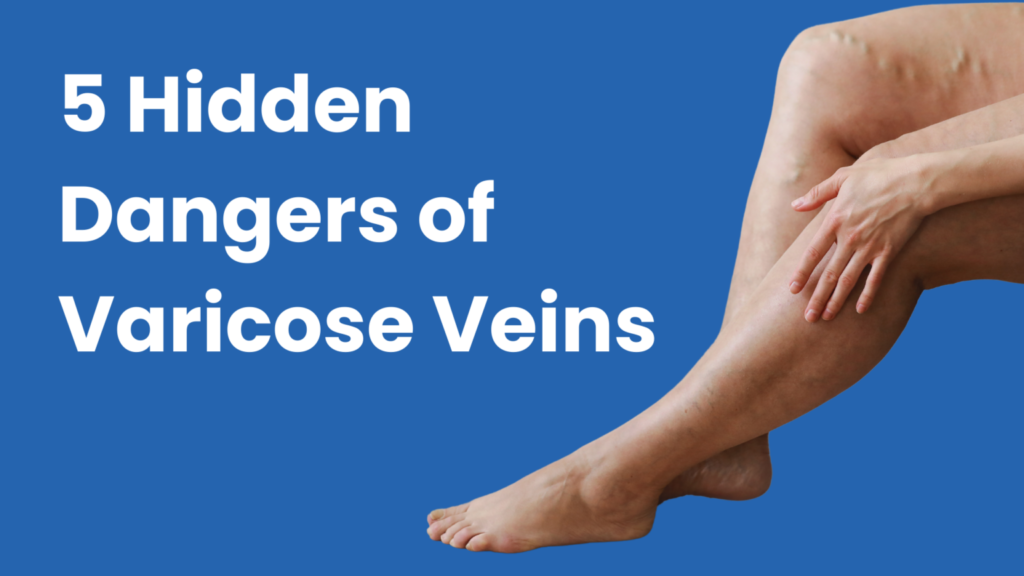Any issue that affects your blood vessels falls under vascular disease, and these problems can range from varicose veins to potentially fatal conditions like strokes or aneurysms.
At Soffer Health Institute, under the expert guidance of board-certified cardiovascular disease specialist Dr. Ariel Soffer, our team understands the many factors that place you at risk for developing a vascular disease, and we review them here.
Table of Contents
ToggleThe many faces of vascular disease
As we mentioned, vascular disease can take on many forms, including, but not limited to:
- Varicose veins and spider veins
- Peripheral artery disease
- Chronic venous insufficiency
- Deep vein thrombosis
- Coronary artery disease
- Stroke
- Pulmonary embolism
This list is by no means comprehensive, but it gives you an idea of the breadth and scope of vascular diseases. While these diseases differ greatly in terms of location and severity, they do share many of the same risk factors.
Some risk factors, such as age and genetics, are beyond our control, but many risk factors are well within our power to change.
Your weight
One of the biggest contributors to vascular disease is carrying too much weight. Consider that two out of three Americans are considered overweight, with one in three crossing over into obesity, and you can see that this is one risk factor that’s very common.
For those who have a body mass index (BMI) over 25, the problem can be quite serious, because carrying too much weight hampers your blood vessels in many ways. For instance, extra weight can contribute to high blood pressure, which puts more pressure on your artery walls. And the extra fat in your blood can build up and narrow your blood vessels in a condition called atherosclerosis, which forces your cardiovascular system to work harder.
Smoking
There are dozens of reasons to quit smoking and at the top of the list is your cardiovascular health. Smoking increases your risk of developing cardiovascular disease by up to four times, and it’s also associated with high blood pressure. The nicotine in cigarettes causes your blood vessels to contract, which can severely compromise your circulation.
Diabetes
Diabetes has a direct link to your vascular health since the disease affects your body’s ability to control the levels of sugar in your blood. Over time, high blood sugar can lead to damage in your peripheral blood vessels in your feet, eyes, kidneys, and other areas. People with diabetes are at a higher risk of developing heart disease and stroke.
Cholesterol and your diet
If you have high “bad” cholesterol numbers (or not enough “good” blood cholesterol), your risk for vascular disease rises exponentially. While some cholesterol problems are hereditary, many develop because of poor eating habits that favor fatty and sugary foods over healthy fare.
Inactivity
Another serious contributor to vascular disease is inactivity. If you don’t get up and move, your muscles aren’t the only areas of your body that suffer. Your blood vessels (and your heart) need regular “workouts,” as well, to help them function optimally.
Another common vascular problem associated with inactivity is chronic venous insufficiency (CVI). With CVI, the valves in the veins in your legs that help circulate blood back to your heart begin to fail, allowing blood to pool, which is what creates varicose veins.
Most of the risk factors we’ve listed are ones that you can change. In fact, losing just 5-10% of your body weight can make a world of difference in your vascular health. And to lose the weight, you can tackle a number of risk factors at once by exercising a little more and eating healthier foods.
As well, if vascular disease has left you with varicose or spider veins, the good news is that we offer several advanced treatments that can eliminate them.
If you’d like to learn more about your risk factors for vascular disease and how we can treat problems with your blood vessels, we urge you to contact one of our offices in Aventura, Deerfield Beach, and Weston, Florida.



